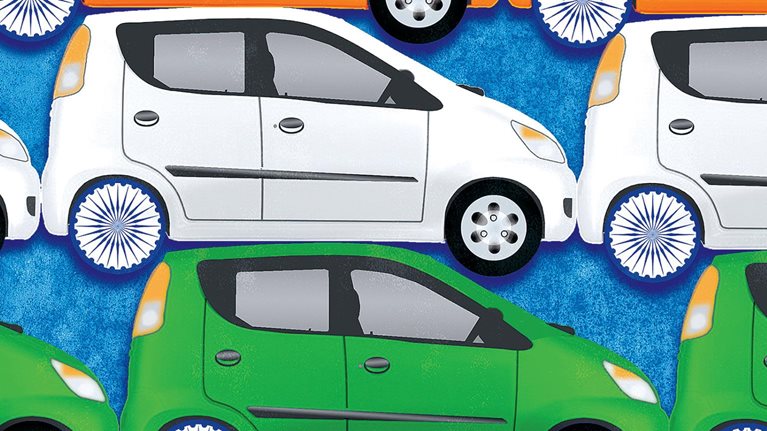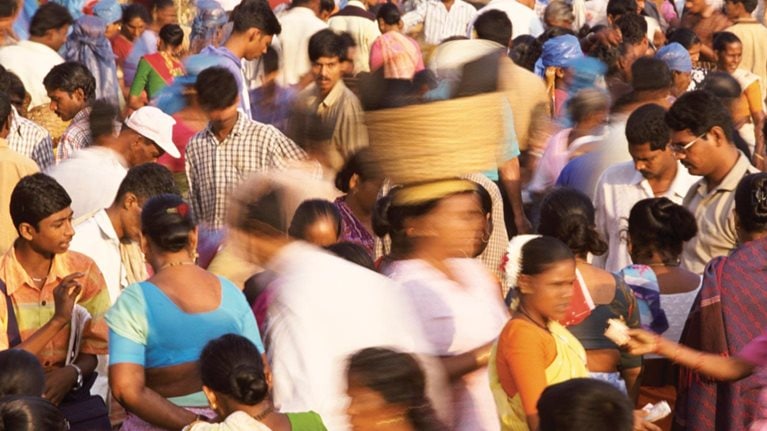India has made encouraging progress by halving its official poverty rate, from 45 percent of the population in 1994 to 22 percent in 2012. This is an achievement to be celebrated—yet it also gives the nation an opportunity to set higher aspirations. While the official poverty line counts only those living in the most abject conditions, even a cursory scan of India’s human-development indicators suggests more widespread deprivation. Above and beyond the goal of eradicating extreme poverty, India can address these issues and create a new national vision for helping more than half a billion people attain a more economically empowered life.
To realize this vision, policy makers need a more comprehensive benchmark to measure gaps that must be closed and inform the allocation of resources. To this end, the McKinsey Global Institute (MGI) has created the Empowerment Line, an analytical framework that determines the level of consumption required to fulfill eight basic needs—food, energy, housing, drinking water, sanitation, health care, education, and social security—at a level sufficient to achieve a decent standard of living rather than bare subsistence.
In applying this metric to India, we found that in 2012, 56 percent of the population lacked the means to meet essential needs. By this measure, some 680 million Indians experienced deprivation, more than 2.5 times the population of 270 million below the official poverty line. Hundreds of millions have exited extreme poverty but continue to struggle for a modicum of dignity, comfort, and security. The Empowerment Gap, or the additional consumption required to bring these 680 million people to the level of the Empowerment Line, is seven times higher than the cost of eliminating poverty as defined by the official poverty line (exhibit).
A new measure of poverty—the Empowerment Line—shows that the additional consumption (the Empowerment Gap) needed to give 680 million people decent living standards is seven times higher than the cost of eliminating poverty as defined by the government.

The Empowerment Line is a measure of individual consumption, yet the ability or willingness to spend is not wholly sufficient, in itself, to guarantee a decent life. Households also need access to basic services, such as health clinics and schools, at a community level, as well as electricity, drinking water, and improved sanitation within their homes. Our research finds that Indian households, on average, lack access to 46 percent of the basic services they need, and it identifies wide geographic disparities in the availability of social infrastructure.
Job creation and productivity gains have historically been the most powerful forces for improving living standards—and India is in need of deep reforms that can encourage businesses to invest, scale up, and hire. If India’s recent weak economic performance continues and no major reforms are undertaken, we project that in 2022 more than one-third of the population will remain below the Empowerment Line and that 12 percent will remain trapped in extreme poverty.
MGI’s research outlines a more ambitious yet economically sound path of inclusive reforms, which could lift 580 million people above the Empowerment Line by 2022, while virtually eliminating extreme poverty. It involves four key priorities:
- Accelerating job creation. India needs to add 115 million new nonfarm jobs over the next decade to accommodate a growing population and reduce agriculture’s overall share in employment. The manufacturing and construction sectors, along with labor-intensive services, can form the backbone of this effort. To support job creation, policy makers can focus on reducing the administrative burden on businesses, accelerating infrastructure projects, making the labor market more flexible, removing market distortions, and expanding vocational training for the poor and uneducated.
- Raising farm productivity. Increasing investment in agricultural infrastructure and implementing reforms to improve market access, rationalize price supports, expand the adoption of new technologies, and streamline agricultural administration and extension services can help to achieve annual yield growth of 5.5 percent. This would bring India’s yields into line with those in other emerging Asian countries by 2022.
- Increasing public spending on basic services. To fill the most critical gaps, public spending on basic services would need to grow in real terms by about 6.7 percent annually through 2022. The fiscal resources will be available if India can achieve faster GDP growth. The share allocated to health care, water, and sanitation, however, needs to double.
- Making basic services more effective. We estimate that half of India’s current public spending on basic services does not translate into improved outcomes for the poor. By 2022, however, that spending can become 50 percent more effective if the nation as a whole matches the standards already set by the best-performing states. Some of the most promising strategies include forming partnerships with the private and social sectors, mobilizing community participation, and using technology to streamline and monitor operations.
Put together, these forces would set off a virtuous cycle generating more revenue, thus enabling India to meet its fiscal-deficit targets even as it ploughs additional funding into social infrastructure and achieves nearly universal coverage for the basics of health care, water, sanitation, and energy.
The Empowerment Line begins with the premise that every household in India should be able to attain a fundamental sense of economic security, opportunity, and dignity. This new benchmark reveals the dimensions of today’s problem and provides a framework for designing interventions that could deliver a better quality of life for the majority of India’s citizens.


